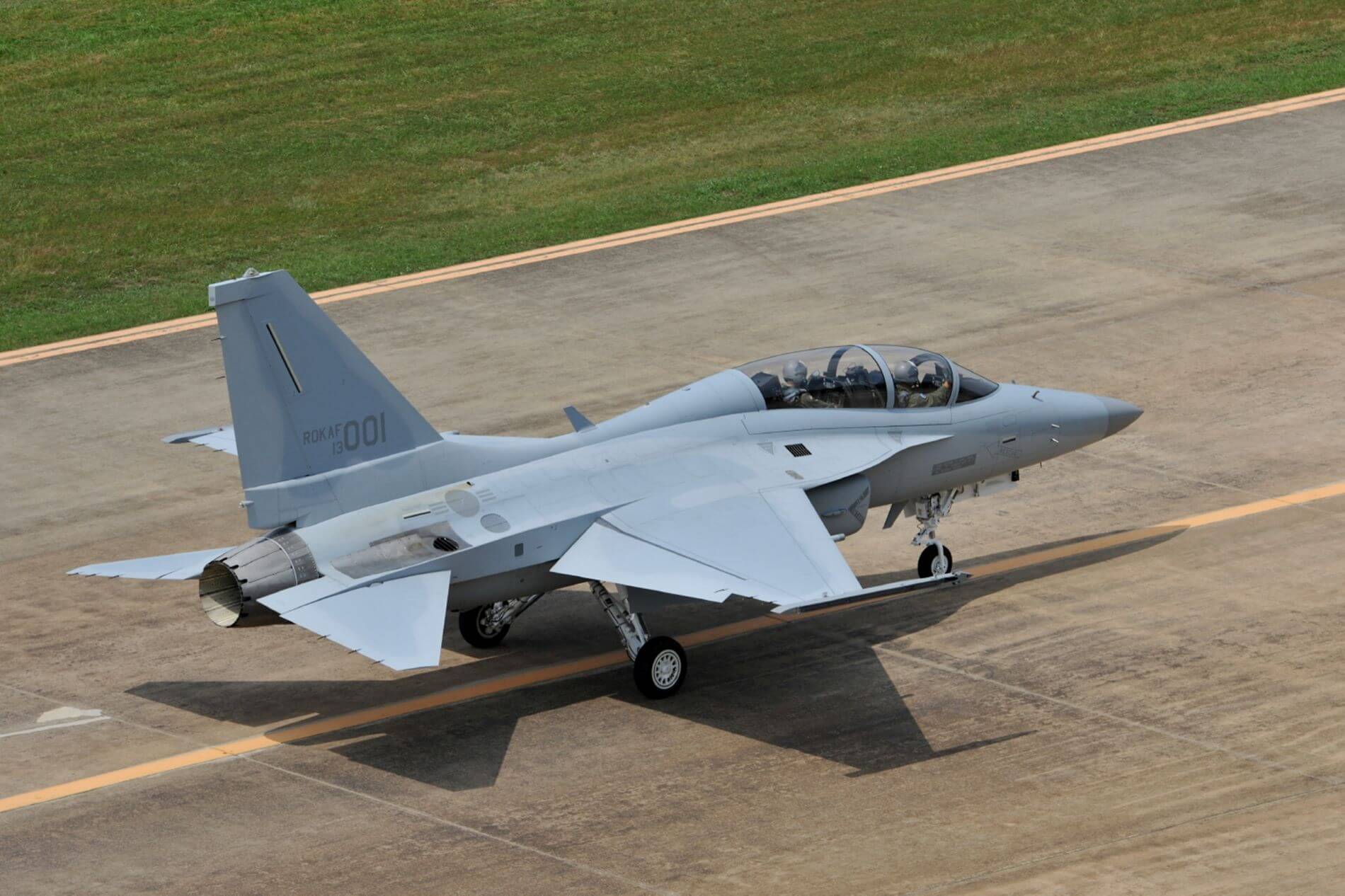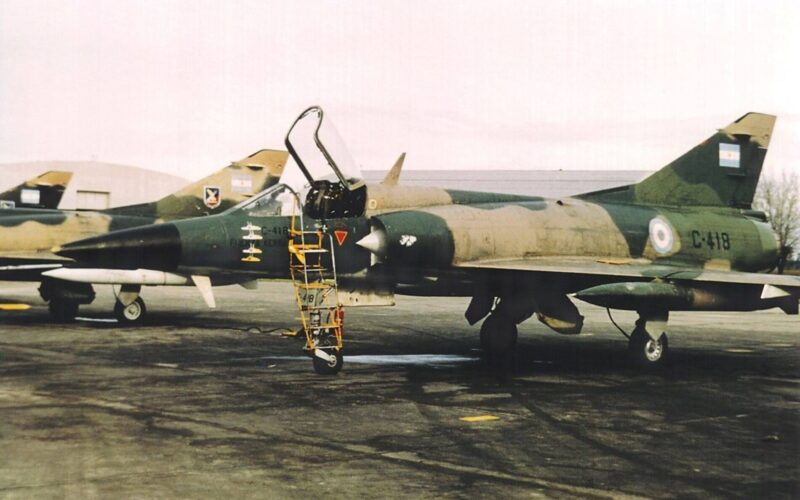Fighter jets are crème of the crop of any air force. They are crucial for protecting a country’s airspace, a thing Argentina learned that the hard way during the Falklands war. But what became of its air force later?
According to British accounts, the Argentinian Air Force (Fuerza Aérea Argentina, FAA) was a capable and respected adversary during the conflict that unfolded in the South Atlantic in 1982. It inflicted heavy casualties upon the British task force and operated extremely well in difficult conditions.
Despite that, it barely had a capability to engage British aircraft and suffered losses upon trying to do so. It was mostly due to the lack of aerial refueling capability of their Mirage III and Dagger (refurbished IAI Nesher) fighters, which limited them to an anti-ship role.
Both types of jets were comparatively new at the beginning of the war though, a result of heavy modernization during the 70s. The post-war arms embargo, coupled with war-time losses, left the FAA stagnant. Even more, the UK continued to inflict losses on the Argentinian Air Force even in peace-time conditions, dealing blows heavier than those inflicted by their missiles.
The attempts
That is when the strangeness begins. At first, unable to purchase any foreign arms, Argentina tried to do what it did numerous times before: design a domestic fighter jet.
It was called the SAIA 90 and designed at Fábrica Argentina de Aviones which produced the Pulqui I and the Pulqui II – South America’s first fighter jets from the late 40s and early 50s. The SAIA 90 was supposed to be a sleek, modern 4th generation fighter somewhat reminiscent of the F/A-18, developed together with the German manufacturer Dornier and built using whatever parts from foreign contractors were available.

A render of SAIA 90 (Image: Sravps / Wikipedia)
As part of grandiose plans to reequip much of its military, the project proved to be more than the country can handle. One by one, other design projects – such as the domestic ballistic missile – were being closed due to the lack of funding, and SAIA 90’s turn came as well.
Its final blow came in the early 90s, as the arms embargo was lifted and it became apparent that purchasing foreign-made jets was cheaper and faster. Without any hesitation, Argentina started negotiations.
The first round was with Israel and the U.S., with possibilities to purchase either IAI Kfirs or General Dynamics F-16s on the table. Neither were successful and only several A-4AR Fightinghawk light attack jets were acquired. They could serve their purpose at least while the Falklands-vintage Mirages and Daggers worked; by mid-2010s, they did not.
Sensing the inevitability to retire the entire fighter jet fleet, Argentinian Air Force went for everything that was available. At first, talks with the French government regarding 16 Mirage F1s began. They fell through. Talks over Spain’s surplus Mirages had the same result, as did negotiations with Sweden over Gripens.
In all those cases, it was not because Argentina could not pay the price or had too high demands; UK, a supplier of at least a fraction of parts to all aforementioned jets, boycotted the sales. Argentina still held no small grudge over the fought-over islands – it never accepted British dominion over them. The possibility of the second Falklands war seemed too real for the UK, and it did everything it could not to allow Argentina to arm itself.
Israel, reportedly unwilling to damage its relationship with Britain, stalled their renewed negotiations for Kfirs without any vetoes. They were renewed at least for a couple of times later, but never really took off. The war was over for two decades, but the cold situation over a mostly-barren piece of rock in the middle of a cold ocean still had profound impact over Argentine military capability.
Reportedly, there were talks with China and Russia as well, but details on those are scarce and it is likely Argentina was unwilling to risk its standing with the U.S.
The final blow
Finally, a potential seller that was far enough from the United Kingdom was found: in the summer of 2019 Argentina announced that Korea Aerospace Industries (KAI) attracted their interest with T-50 advanced trainers. After the failure to push the aircraft through the U.S. T-X trainer program, KAI seemed like a willing provider.
There is a debate whether the FA-50, the combat variant of the T-50 trainer, could really be called a fighter jet. With its supersonic speed, ability to carry precision-guided munitions and provision for aerial refueling, it was miles above anything the FAA previously wielded. Still, it left a lot to desire in comparison with even the previous generation of purpose-built fighters, lacking both in power and in payload. Beneath all the upgrades it was still a trainer, designed to offer pilots a possibility to experience advanced weapons systems in a supersonic package, before transitioning to real combat airplanes.

KAI FA-50 (Image: Korea Aerospace Industries)
Yet another problem was the size of the order. Mirages and Daggers long gone, the “new” A-4 ground attack planes were heavily aged as well, and reportedly, just a couple of them were still in flyable condition. Although official numbers on the FA-50 deal never came out, both Argentinian and Korean media reported the potential purchase of 10 jets. Although better than nothing, such a miniaturisation was nothing but extreme.
The contract was being worked on, but not yet finalized, when the COVID-19 pandemic struck. As the world’s economy began withering, expensive military hardware lost primary importance. In April 2020, KAI announced that the negotiations were on indefinite hold. Seemingly, this did not mean that they were cancelled – possibly, a renewal was to be expected as soon as the economic situation improves.
But then, on November 3, the Argentinian Defence Minister shared a letter from KAI, where the sale of the FA-50 was described as impossible due to six major components being manufactured in the U.K. and thus subjected to its arms embargo. It is unclear how the talks could progress to such a late stage without this fact being revealed.
Following the development, Julio Martinez – a former Argentinian defense minister, under whose guidance many rounds of unsuccessful talks were conducted in the 2010s – said that more aircraft have been lost during last years of inactivity than during the Falklands war. He pointed out that Fábrica Argentina de Aviones, despite employing over 1,500 people, did not produce a single aircraft in ten years. Which is not true – it produced several light trainers for pilots to train flying fighter jets that just are not there.
An argument can be made that the FAA does not really have a capability to maintain modern, expensive fighter jets – the entire defense budget of the country was around $4.6 billion in 2016, most of it covering personal expenses. A counter to that would be something like Finnish Defence Forces, whose budget – smaller by one billion – allows it to maintain a sizable air force with plans to heavily modernize it, possibly with 5th generation fighter jets. Norway, which in 2016 had similar spending to Argentina, continues to purchase a new batch of F-35s (the most expensive fighter jets currently available) every year.
It seems, it is very difficult to find fighter jets without any part produced in UK, Britain’s diplomacy, thus, finishing the job its Navy started doing in the early 80s. Another view of the situation – showing Argentinian stubbornness as the main culprit –- could be taken on, as it is quite clear that if the country does not try to normalize its international relations, it may never acquire any semblance of a capable Air Force. Thus, the diminishment of the FAA remains unrivalled in the rest of the World.

